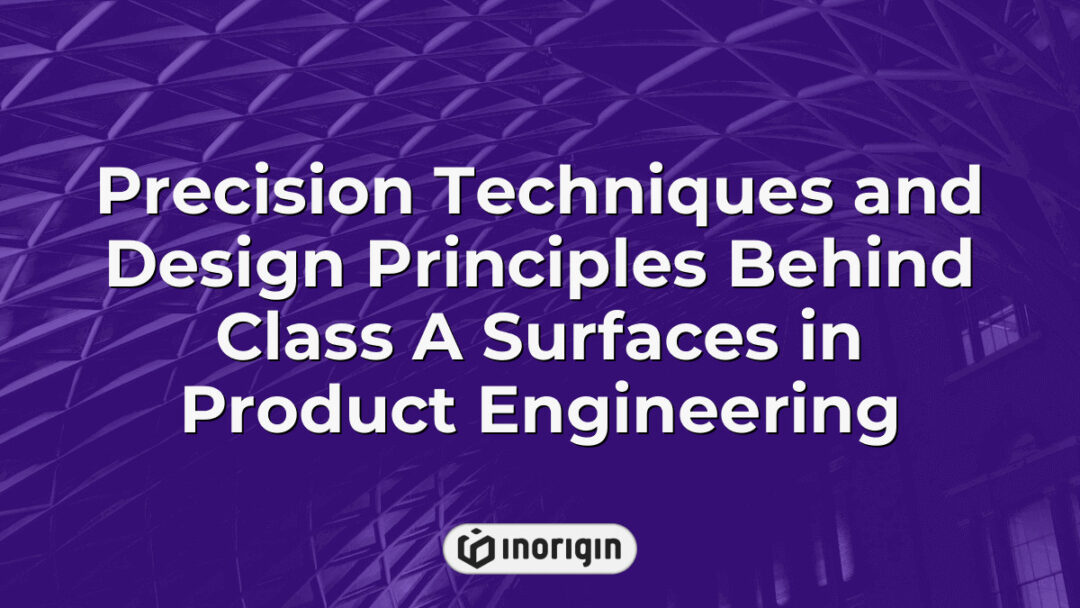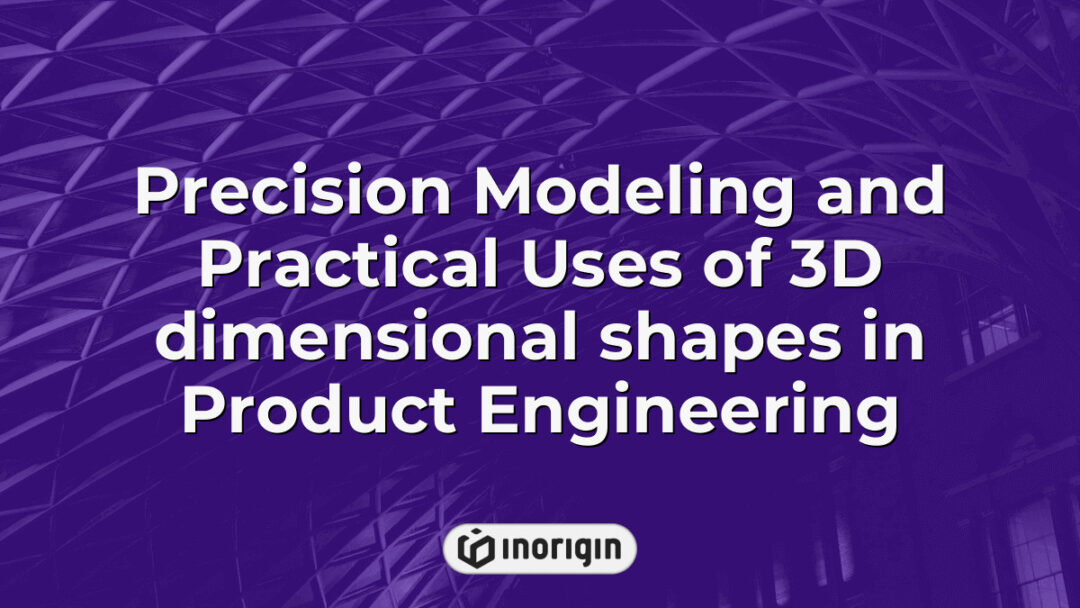In the world of geometry, where the elegance of form meets the precision of mathematics, Class A surfaces stand as the paragon of design excellence, seamlessly merging aesthetic beauty with functional integrity. These sophisticated surfaces, revered in fields ranging from automotive engineering to industrial design, exemplify the culmination of meticulous curvature and flawless continuity, challenging the very boundaries of creativity and practicality. By adhering to stringent mathematical criteria, Class A surfaces not only enhance visual appeal but also contribute significantly to the performance and manufacturability of complex geometries. This article delves into the intricacies of Class A surface creation, exploring its critical role in shaping modern design paradigms and its impact on various industrial applications.
| Αποψη | Key Takeaway |
|---|---|
| Ορισμός | Class A surfaces represent the pinnacle of design, combining aesthetic beauty with precise curvature and functional integrity based on strict mathematical standards. |
| Importance | These surfaces play a crucial role in enhancing product value and consumer perception, especially in industries like automotive and industrial design. |
| Design Principles | Achieving Class A surfaces requires meticulous control of curvature, reflection analysis, and collaboration across design, engineering, and materials science disciplines. |
| Εργαλεία | Advanced CAD software such as Rhino, Alias, and Siemens NX, combined with precision input hardware, enable detailed surface modeling and quality assurance. |
| Προκλήσεις | Balancing aesthetic fluidity with manufacturing constraints and material properties demands innovation and practical decision-making throughout the design process. |
| Εφαρμογές | Class A surfaces are essential in automotive and aerospace sectors for optimizing aerodynamics and visual appeal, supporting brand identity and performance. |
| Common Mistakes | Overlooking curvature consistency, improper material selection, and insufficient prototyping can impair surface quality and functional performance. |
Definition and Importance of Class A Surfaces
Class A surfaces resemble the polished stones of a serene river, their smooth, reflective quality hinting at depths beyond mere appearance. These surfaces are defined by exceptional standards, crucial not only in automotive and industrial design but also in consumer products where visual appeal is paramount. The importance of class A surfaces lies in their ability to not only meet aesthetic expectations but also fulfil functional requirements, thereby influencing consumer perception and enhancing product value. For example, in the automotive industry, manufacturers aim to achieve class A surfaces to ensure that vehicles not only perform admirably but also have that captivating visual allure that attracts buyers; this demonstrates how high surface quality becomes a decisive factor in market competition. Furthermore, achieving such surface standards often necessitates sophisticated manufacturing processes and meticulous attention to detail, resulting in a harmonious blend of artistry and engineering. Thus, the definition and significance of class A surfaces extend beyond surface-level considerations, embodying a meticulous quest for excellence that resonates throughout multiple sectors.
Design Principles and Techniques for Achieving Class A Surfaces
Design principles and techniques for achieving class A surfaces revolve around the intricate interplay of curvature and reflections, both of which are paramount in obtaining a flawless aesthetic in surface design. To achieve these high-level surfaces, several strategies can be employed that enhance both visual appeal and functional integrity. Firstly, ensuring the right control of curvature is essential; smooth transitions between different surface elements prevent distortion. Secondly, meticulous attention to how reflections interact with the surface can highlight or hide imperfections. Furthermore, the application of advanced CAD tools allows for precision in design, ensuring that each facet reflects light correctly.
Key techniques include:
- Utilising surface modelling software to analyse curvature.
- Implementing physical prototypes to assess reflection behaviour.
- Conducting iterative testing to refine designs based on real-world performance.
- Collaborating across disciplines, integrating insights from designers, engineers, and materials scientists to optimize the surface quality.
These methods collectively contribute to achieving the desired quality. Understanding the complex relationship between these factors underpins successful design, which necessitates a methodical and judicious approach to surface treatment. Effective surface design not only enhances product aesthetics but also improves the functional aspects of the product. Therefore, prioritising such principles catalyzes innovation within the industry, leading to remarkable advancements in manufacturing and product design.
Tools and Software Used in Creating Class A Surfaces
The tools and software used in creating Class A surfaces are integral to the processes of 3D modeling and Class A modeling, contributing not only to aesthetic outcomes but also to functional performance. For instance, software such as Rhino, Alias, and Siemens NX offer advanced functionalities tailored for designers aiming to achieve high-quality surface finishes; these applications allow for meticulous control over the curvature and continuity of surfaces, which are essential characteristics of Class A standards. Additionally, the incorporation of plug-ins, like V-Surface and T-Splines, enhances the capabilities of these tools, facilitating more nuanced design alterations; these extensions can drastically streamline workflow and reduce design iterations. Transitioning to hardware, the role of high-precision input devices—like 3D mice and digitizers—cannot be underestimated, as they foster greater accuracy in surface manipulation. Consequently, the combination of sophisticated software environments and cutting-edge hardware empowers designers to push the boundaries of 3D modeling, ensuring that the final products meet rigorous Class A specifications. Hence, this interplay between tools and artistry is not merely about technology; it embodies an evolving conversation within the design industry where innovation continuously shapes the standards of quality and aesthetic appeal.
Challenges and Considerations in Class A Surface Design
In the pursuit of class A surface design, myriad challenges surface—ranging from the elusive nature of freeform surfaces to the pressing need for precise mounting points. Picture a sculptor delicately chiselling a block of stone, each stroke revealing the potential within. This imagery mirrors the task of engineers and designers who grapple with the creation of flawless surfaces, where aesthetic appeal must seamlessly integrate with functional requirements. The inherent complexity in achieving class A surfaces lies not only in the geometric intricacies but also in the constraints imposed by manufacturing processes. For instance, when designing for production, adherence to specific tolerances can conflict with the desire for fluid, organic shapes; thus, trade-offs often become essential. Further complicating matters, considerations such as material properties and surface finish influence the overall outcome—where a minor oversight in planning or execution might yield significant repercussions in the final product. Ultimately, the pathway to effectively navigating the challenges of class A surface design necessitates a delicate balance between innovation and practicality, as the interplay between form and function defines the success of any engineered solution.
Real-World Applications and Examples of Class A Surfaces
Class A surfaces represent a critical connection between functionality and aesthetics in automotive design. Their smooth, reflective qualities not only enhance the visual appeal of vehicles but also are crucial in aerodynamics; thus, the design process requires meticulous attention to detail. Examples of Class A surfaces abound in luxury vehicles, where the seamless integration of aesthetic parts contributes significantly to brand identity. For instance, manufacturers like BMW and Mercedes-Benz consistently utilise advanced surface modelling techniques to ensure optimal light reflection and body contours, creating an elegant visual experience for consumers. In contrast, challenges arise when balancing cost-effectiveness with high-quality outcomes; achieving the desired surface finish often necessitates sophisticated tooling and prototyping methods.
While traditional manufacturing processes may suffice, incorporating modern technologies such as Computer-Aided Design (CAD) and 3D printing has introduced new paradigms in the production of Class A surfaces—allowing for rapid iteration and greater precision in design. This integration not only fosters innovation in automotive design but also encourages sustainability by minimising material waste. Case studies, such as Tesla’s production methods, illustrate how merging technology with aesthetic considerations leads to competitive advantages in the automotive market. Through these real-world applications, it becomes evident that Class A surfaces have become a defining element in the evolution of vehicle design, merging artistry with engineering excellence in a manner that captivates and performs effectively.
Συχνές Ερωτήσεις
What materials are best suited for creating Class A surfaces?
When considering the creation of Class A surfaces—often referred to as those exhibiting high-quality aesthetic characteristics—several materials stand out. First, materials such as acrylic and polycarbonate have gained traction due to their excellent optical clarity and substantial resistance to impact; they allow for both versatility and durability in design. For instance, acrylic sheets, with their capacity for being easily moulded and shaped, have become a staple among designers looking to achieve the desired curvature and finish. Conversely, metals like aluminium and stainless steel are frequently utilised, particularly in applications demanding strength alongside aesthetic appeal. Their ability to be polished to an exceptional finish not only enhances their visual quality but also offers longevity. Furthermore, composites such as fiberglass—or even carbon fibre—are becoming increasingly relevant, especially in industries where weight and performance are critical; they provide a lightweight alternative without compromising structural integrity. A thorough examination of these materials suggests that the selection process should consider the specific requirements of the project, balancing functionality, cost, and visual outcomes in order to achieve the optimal Class A surface.
How does the production process vary for Class A surfaces in different industries?
The production of Class A surfaces across various industries unfolds like the crafting of fine art, where precision and material selection emerge as the brushstrokes defining beauty and functionality. In the automotive sector, for instance, the focus lies on achieving seamless reflections that signal high quality, necessitating a rigorous process involving advanced materials such as high-grade polymers or metals. Transitioning to the aerospace industry, criteria shift towards weight considerations and aerodynamic efficiency, steering manufacturers towards composite materials. These differences illustrate an underlying principle: while technology serves as a common foundation, the specific demands of each field dictate variations in production methodologies, from the use of automation in high-volume environments to hand-finishing techniques in luxury sectors. The marine industry further contrasts these practices, where environmental resistance may take precedence over aesthetic aspects, prompting the integration of specialised coatings to ensure durability amidst harsh conditions. Each sector, therefore, not only reflects its unique requirements but also symbolizes broader themes of innovation and adaptability in material engineering and design, highlighting the intricate relationship between form and function. Understanding these divergent production processes enhances appreciation for the nuanced considerations essential in creating Class A surfaces, ultimately showcasing the interplay between industry-specific demands and technological advances. This interplay underscores the broader implications for product development, as the quest for perfection continues to drive advancements in material science and manufacturing techniques.
What are the most common mistakes to avoid when designing Class A surfaces?
When designing Class A surfaces, certain common pitfalls often surface that can compromise both aesthetic appeal and functional performance. First, neglecting the fundamental principles of surface curvature can lead to undesirable optical characteristics; this includes issues like reflection distortions, which may arise if the curvature is inconsistent or poorly executed. Transitioning to another significant mistake, inadequate attention to material selection can further exacerbate design flaws; for instance, utilizing a low-quality plastic for a high-end automotive surface could result in both visual deficiencies and decreased durability over time. Furthermore, a lack of thorough prototyping and testing—an often overlooked stage in the design process—can inhibit the opportunity to assess how the surface interacts with light and environmental factors, which is essential for achieving that pristine, flawless finish synonymous with Class A standards. Collaboration among multidisciplinary teams might also be undermined; without valuing the input from engineering, design, and manufacturing perspectives, designs may lack cohesion and face impractical implementation challenges. Addressing these mistakes not only enhances the design outcome but also ensures that the product meets industry benchmarks and consumer expectations.
Σύναψη
In conclusion, the exploration of class A surfaces reveals their intrinsic elegance within the realm of design, akin to a meticulously crafted sculpture that captivates the observer. Understanding the principles governing these surfaces enhances both aesthetic appeal and functional performance, establishing their significance in contemporary geometric modeling and engineering applications.
Σχετικές αναρτήσεις:
- Κρίσιμα χαρακτηριστικά σχεδίασης και εφαρμογές της επιφάνειας κατηγορίας Β στην προηγμένη μηχανική προϊόντων
- Precision Engineering Techniques Behind Class A Surface Excellence in Product Design
- Innovations Transforming a Class Surface in Modern Educational Spaces
- Advanced Techniques and Industry Applications of Surface Class in Product Design Engineering
- 3D printing classes at Inorigin unlocking advanced techniques and industry career paths
- Σχεδιασμός για Τεχνικές Κατασκευής Πρόσθετων που Μεγιστοποιούν την Ακρίβεια και τη Λειτουργικότητα




